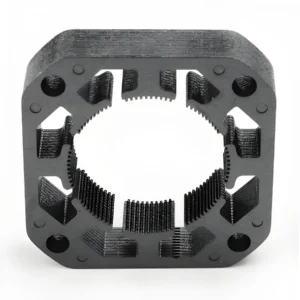
Introduction
Overview of Core Clamps
Core clamps are essential components in the construction and design of transformers. They are used to hold the core laminations together firmly, ensuring that the core remains stable and intact during operation. These clamps are typically made from high-strength materials to withstand mechanical stresses and maintain the structural integrity of the core.
Importance of Core Clamps in Transformer Design
Core clamps play a critical role in transformer design by providing mechanical support and stability. They help maintain the alignment and positioning of the core laminations, which is crucial for the efficient operation of the transformer. Without properly designed and installed core clamps, the core could shift or vibrate, leading to increased noise, mechanical wear, and even potential damage to the transformer.
Brief Mention of the Key Benefits
The Role of Core Clamps in Transformers
Enhancing Stability
This section will delve into the magnetic characteristics of transformer core materials, including magnetic permeability, saturation flux density, and hysteresis loss. Understanding these properties is crucial for evaluating the material’s ability to efficiently magnetize and demagnetize in response to alternating currents, thereby minimizing energy losses and maximizing transformer efficiency.
Improving Performance
These components play a significant role in improving the performance of transformers. When the core is securely held in place, the magnetic path remains consistent, which is essential for efficient energy transfer. This secure hold minimizes magnetic losses and ensures that the transformer operates at optimal efficiency. As a result, energy is used more effectively, and the overall performance of the transformer is enhanced, leading to better reliability and longevity.
Ensuring Safety
Safety is another critical aspect where these components are indispensable. By keeping the core firmly in place, they help prevent any mechanical failures that could result from core movement or misalignment. This secure arrangement reduces the risk of short circuits and electrical faults, which could lead to dangerous situations. Furthermore, the robust design of these clamps contributes to the overall durability of the transformer, ensuring it can withstand various operational stresses and maintain safe functioning over time.
How Core Clamps Work
Mechanism of Action
Core clamps play a vital role in transformer design. They secure core laminations tightly to prevent movement. Usually made from sturdy materials like steel, these clamps endure high mechanical stress. They’re fastened around the core, applying even pressure. This alignment maintains magnetic properties and transformer efficiency.
Integration with Other Transformer Components
Core clamps seamlessly integrate with other transformer components for cohesive functionality. They collaborate with the core, windings, and insulation materials to ensure overall stability and efficiency. By stabilizing the core, they maintain winding alignment, crucial for magnetic coupling and energy transfer. Additionally, they support the transformer housing’s structural integrity, enhancing system durability and reliability.
Examples of Core Clamp Applications in Transformers
Power Transformers: In high-voltage power transformers, core clamps are vital for maintaining the stability of the core under heavy electrical loads. They help ensure that the core laminations do not shift, which could otherwise lead to increased losses and reduced efficiency.
Distribution Transformers: For distribution transformers, core clamps help keep the core laminations tightly packed, ensuring efficient operation in delivering electricity to residential and commercial areas. The clamps also assist in minimizing noise levels and mechanical wear.
Specialty Transformers: In specialty transformers used in applications like medical equipment or renewable energy systems, core clamps provide the necessary stability to maintain precise performance standards. Their role is crucial in environments where reliability and precision are paramount.
By securing the core effectively, these clamps play a crucial role in the optimal performance and safety of various types of transformers, ensuring they operate reliably across different applications.
Benefits of Using Core Clamps
Improved Mechanical Stability
Using these components significantly enhances the mechanical stability of transformers. By firmly holding the core laminations together, they prevent any movement or misalignment that could occur due to mechanical vibrations or thermal expansion. This stability ensures that the core maintains its structural integrity during operation, reducing the risk of mechanical wear and tear. As a result, transformers can operate more reliably and have a longer service life, thanks to the secure positioning provided by these devices.
Enhanced Electrical Performance
These devices play a crucial role in enhancing the electrical performance of transformers. When the core laminations are tightly held together, it ensures a consistent magnetic path, which is essential for efficient energy transfer. This tight hold minimizes magnetic losses such as eddy currents and hysteresis losses, leading to improved efficiency. Consequently, the transformer operates more effectively, with better energy conversion rates, which is particularly important for applications where performance and efficiency are critical.
Reduced Noise and Vibration
Another significant benefit of using these components is the reduction of noise and vibration. Loose or misaligned core laminations can lead to increased vibration and noise during transformer operation. By keeping the laminations tightly pressed together, these components help maintain a quieter and smoother operation. This reduction in noise is particularly beneficial in residential or urban areas where noise pollution could be an issue. Additionally, minimizing vibration helps protect other transformer components from potential damage, further enhancing the overall durability and reliability of the transformer.